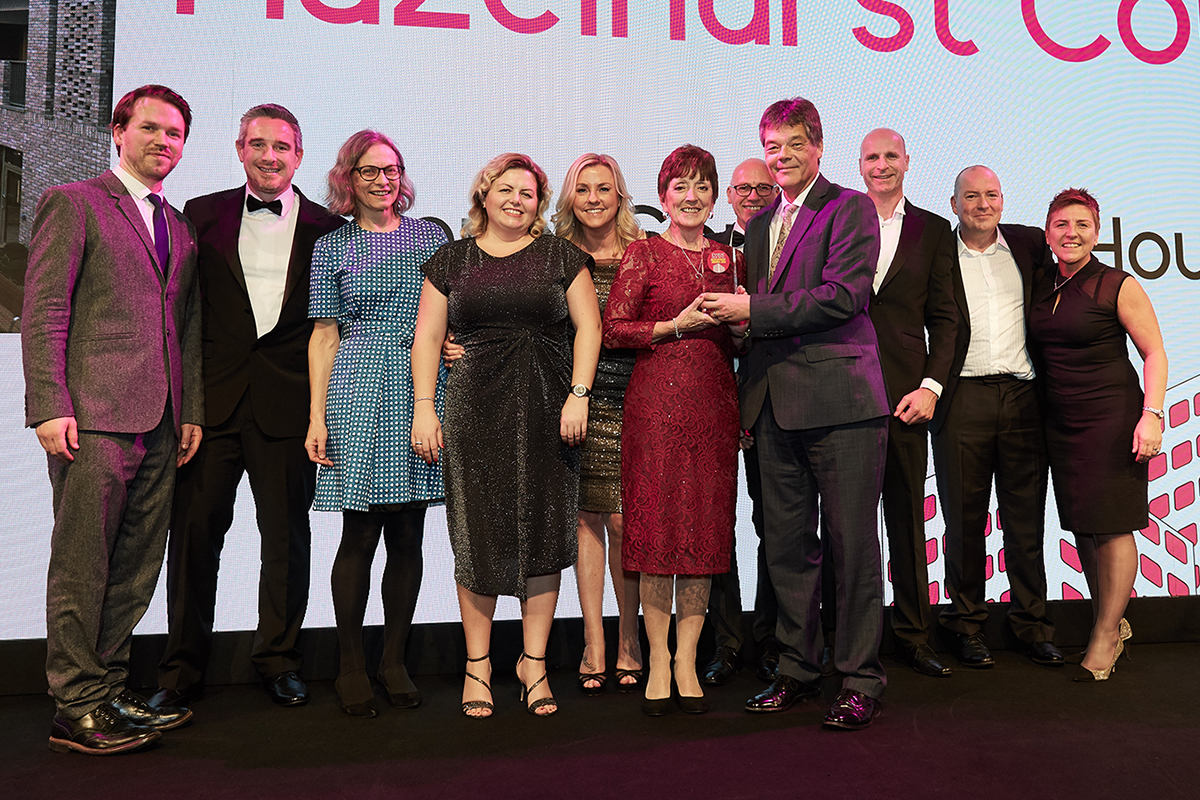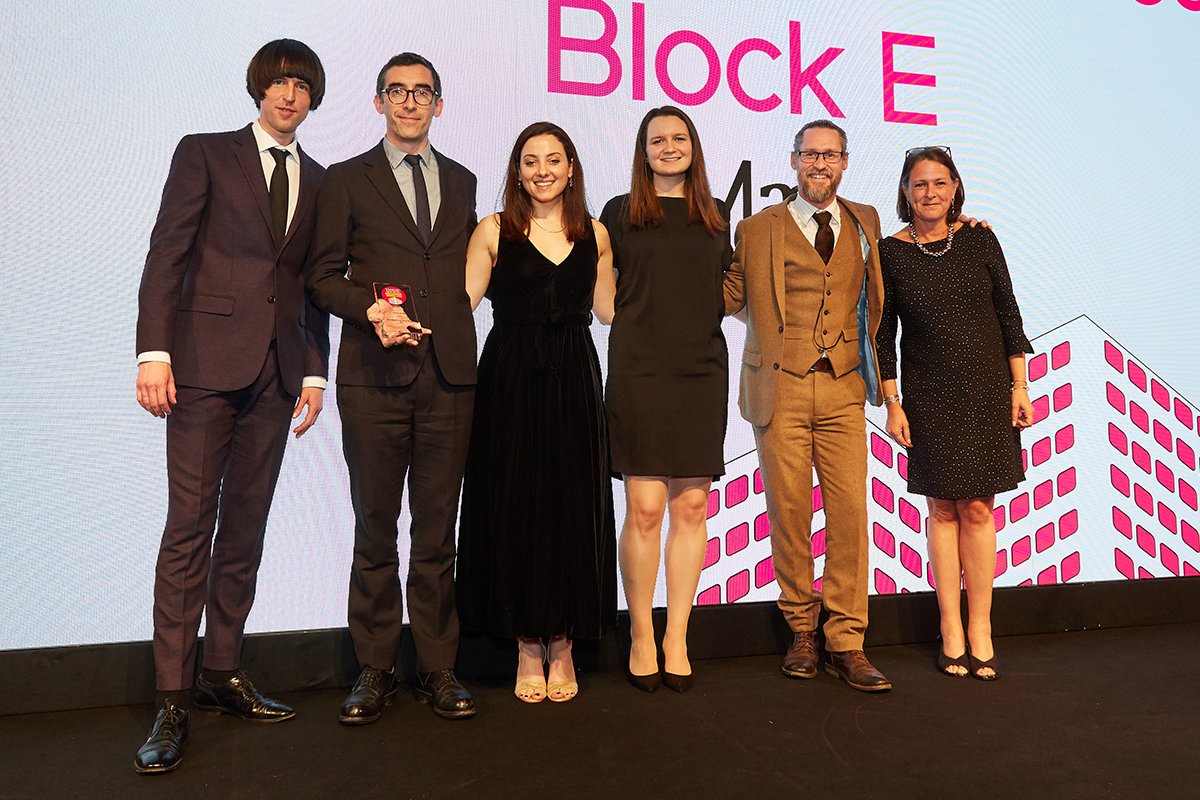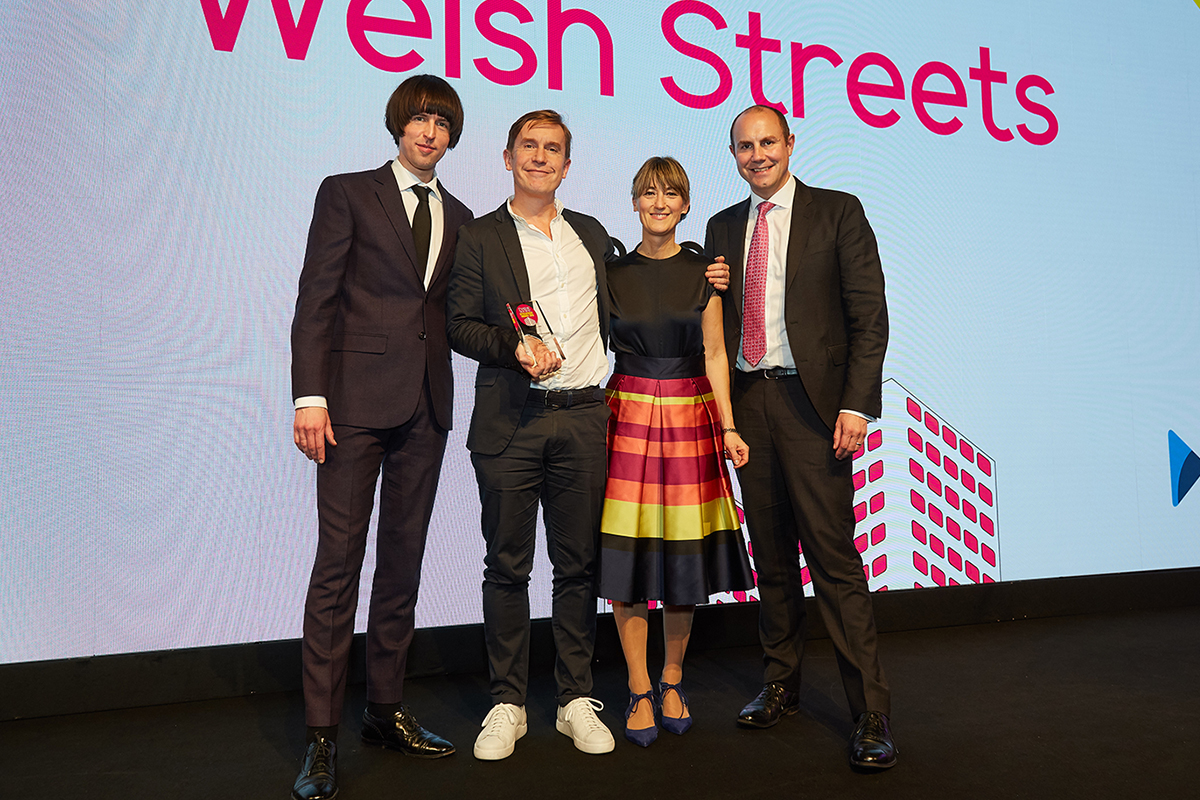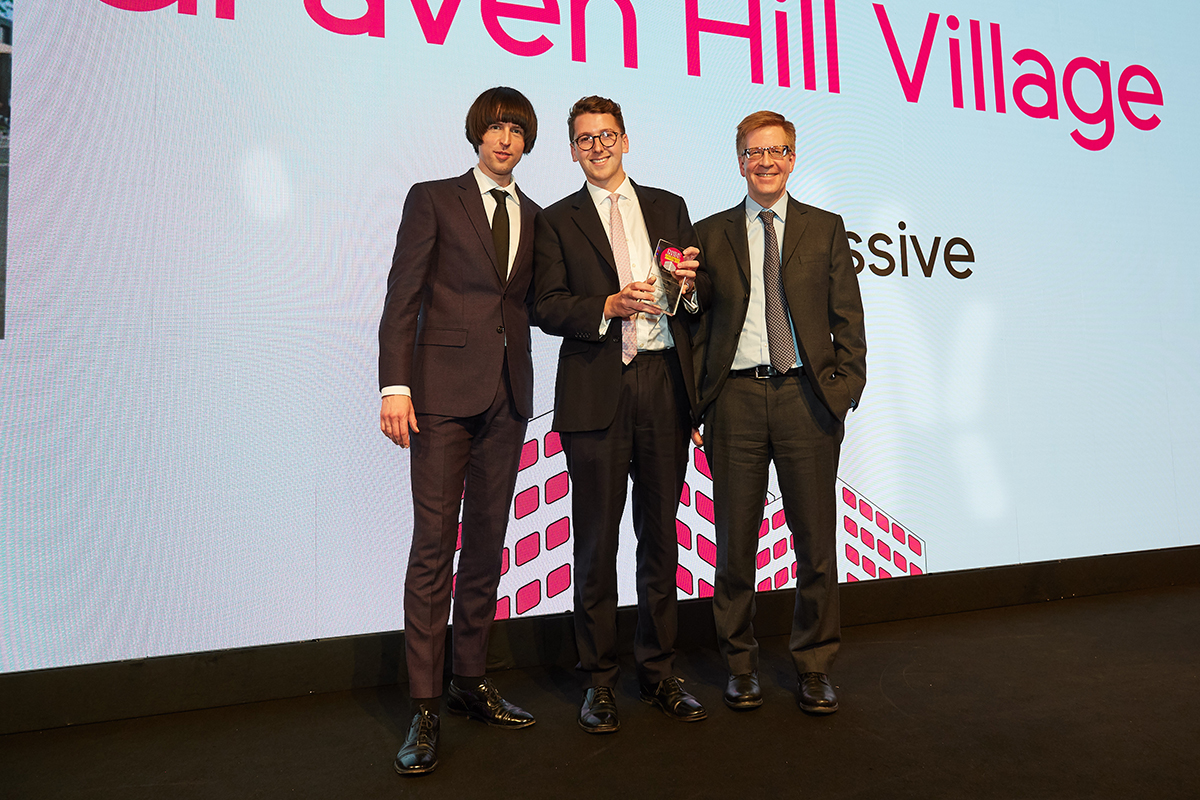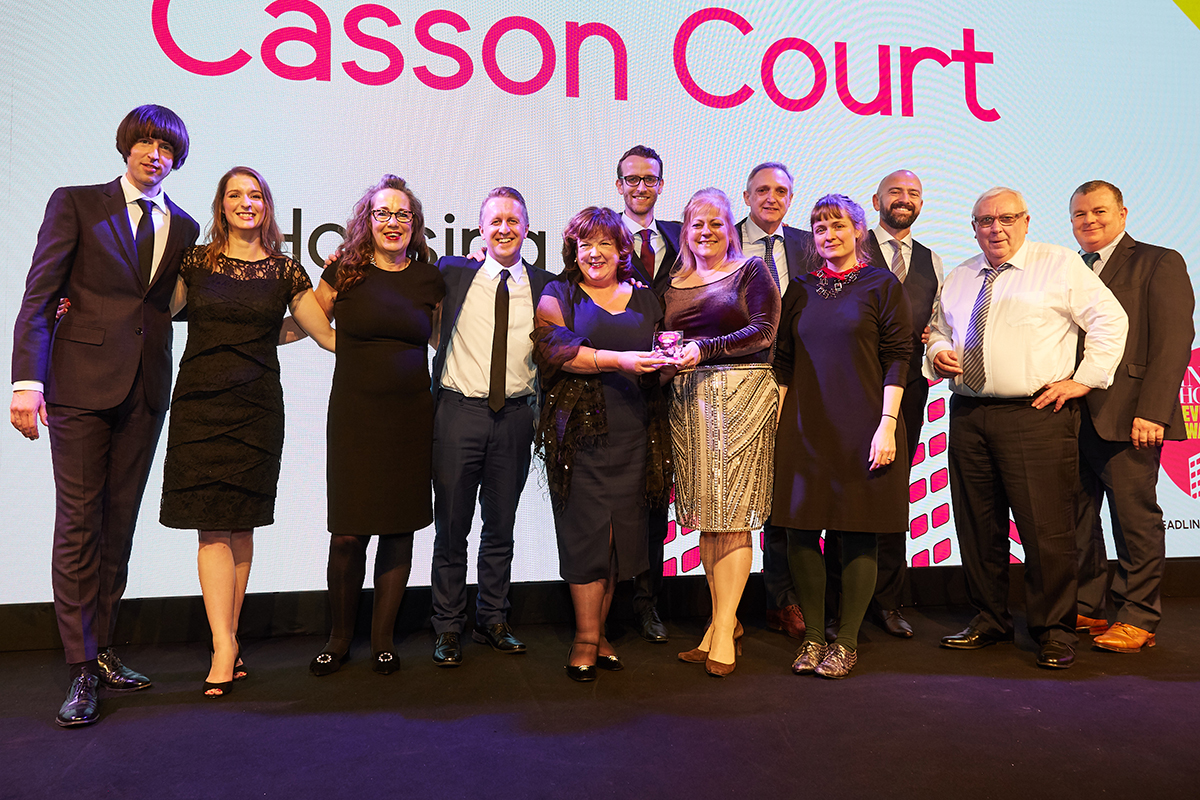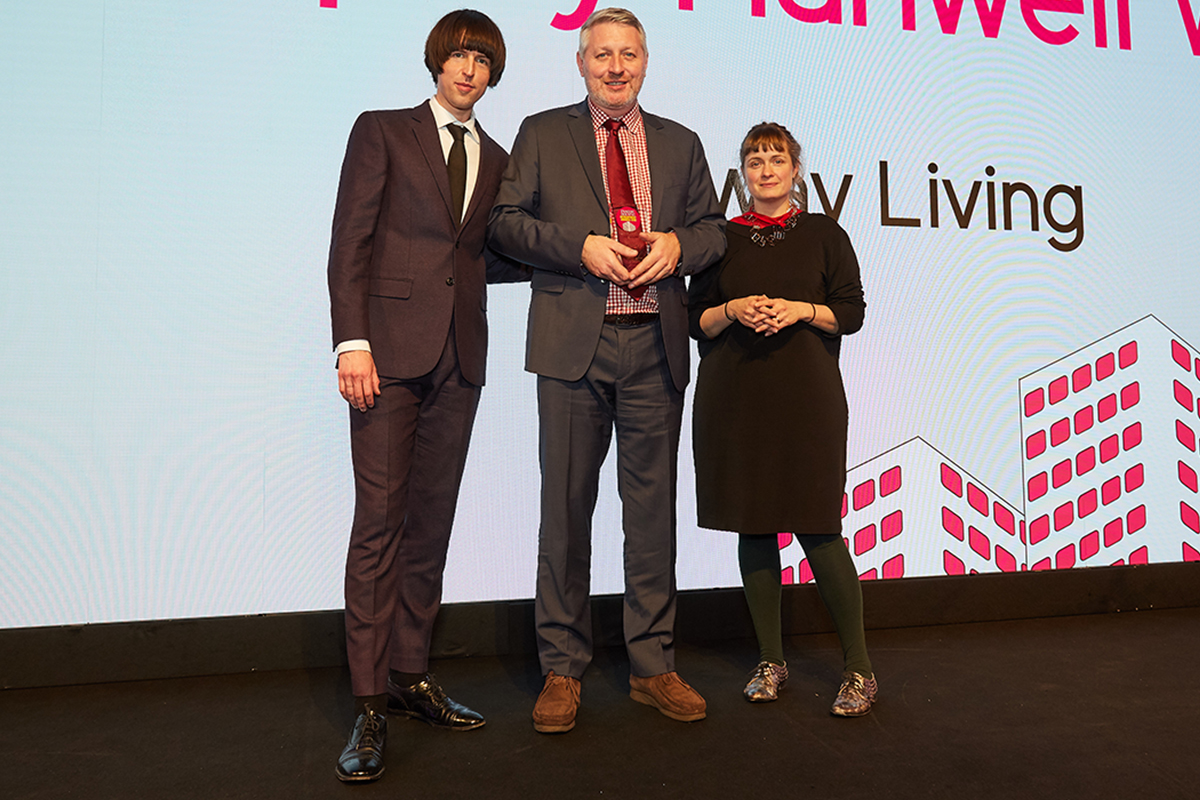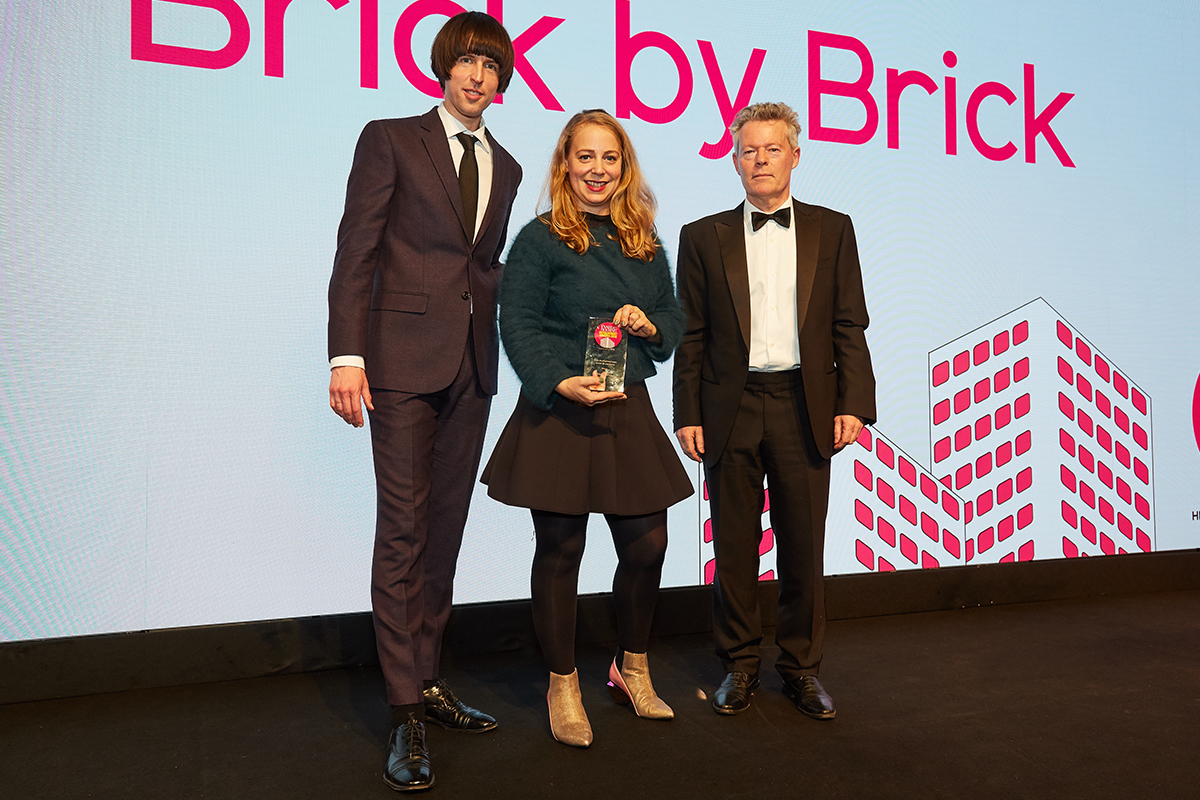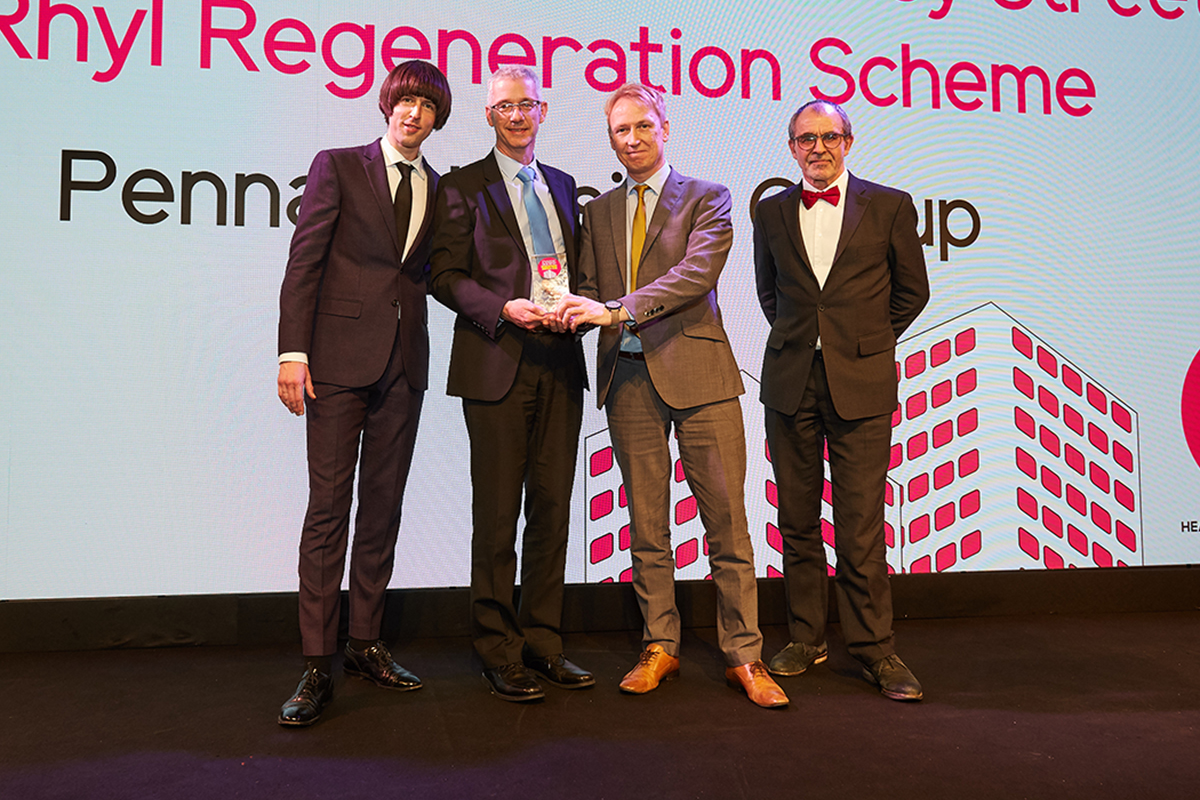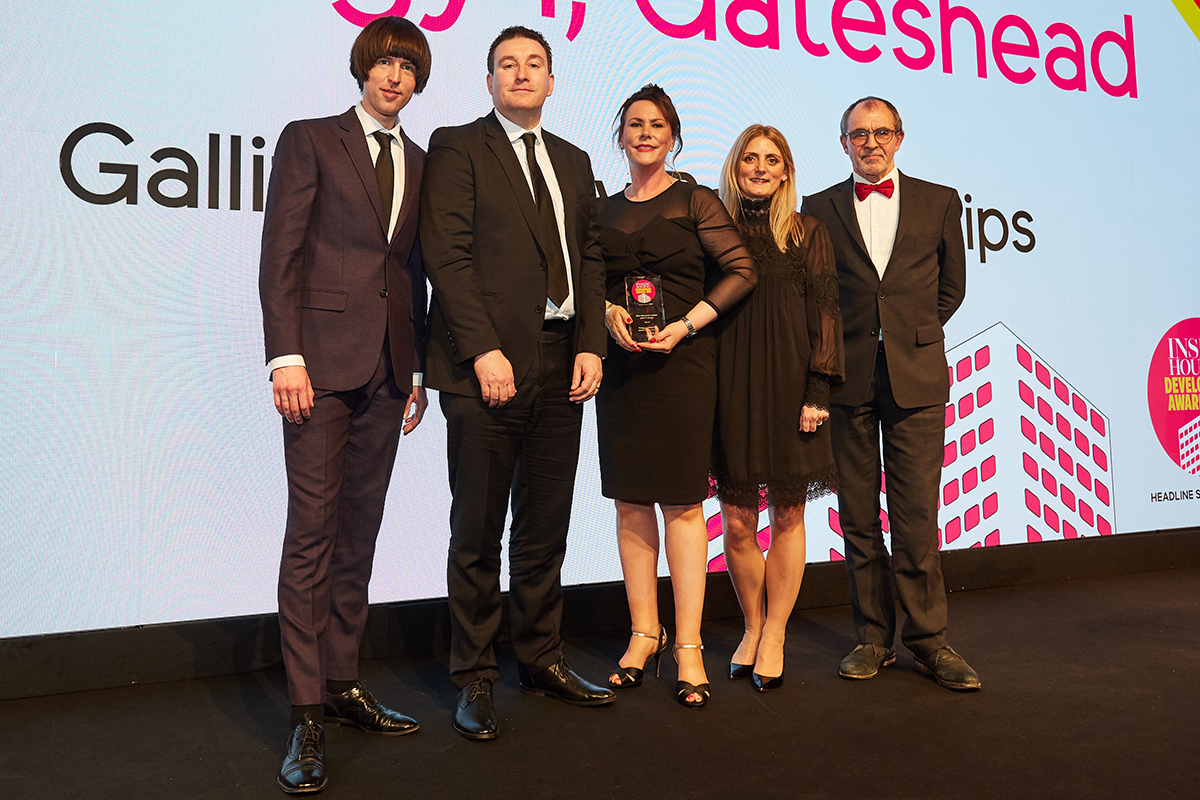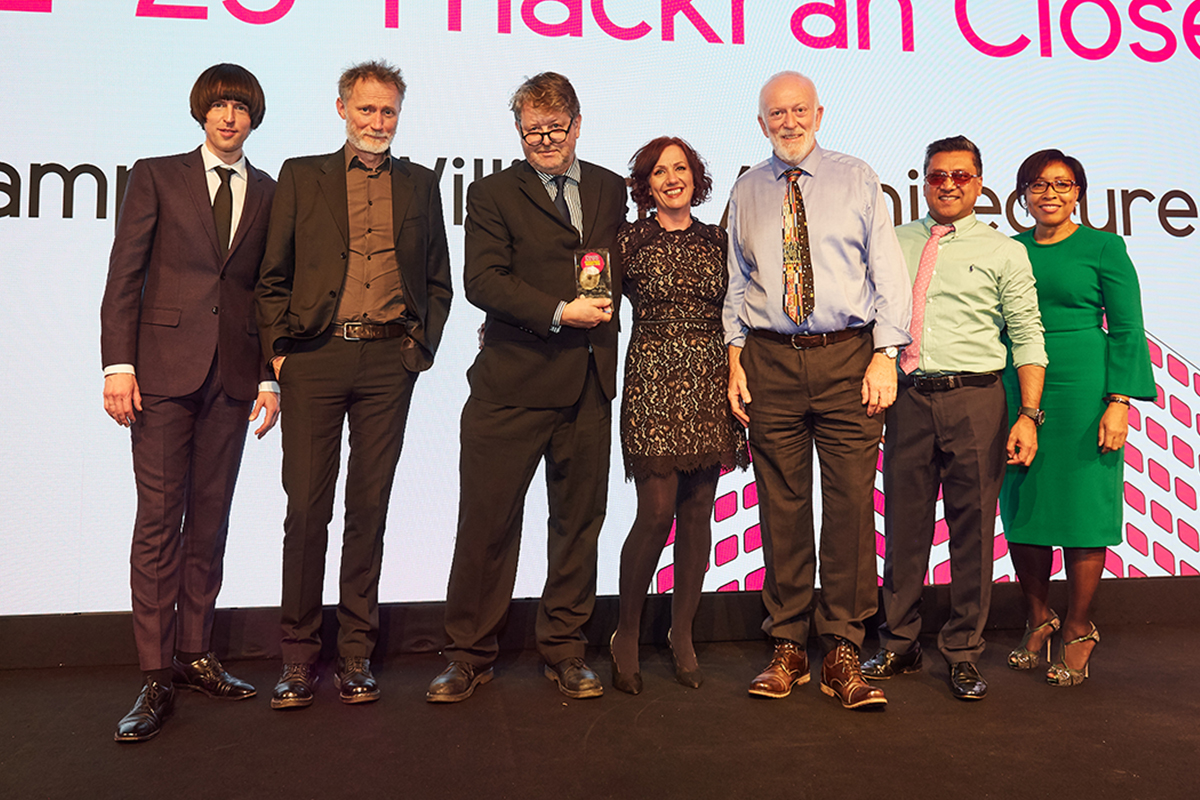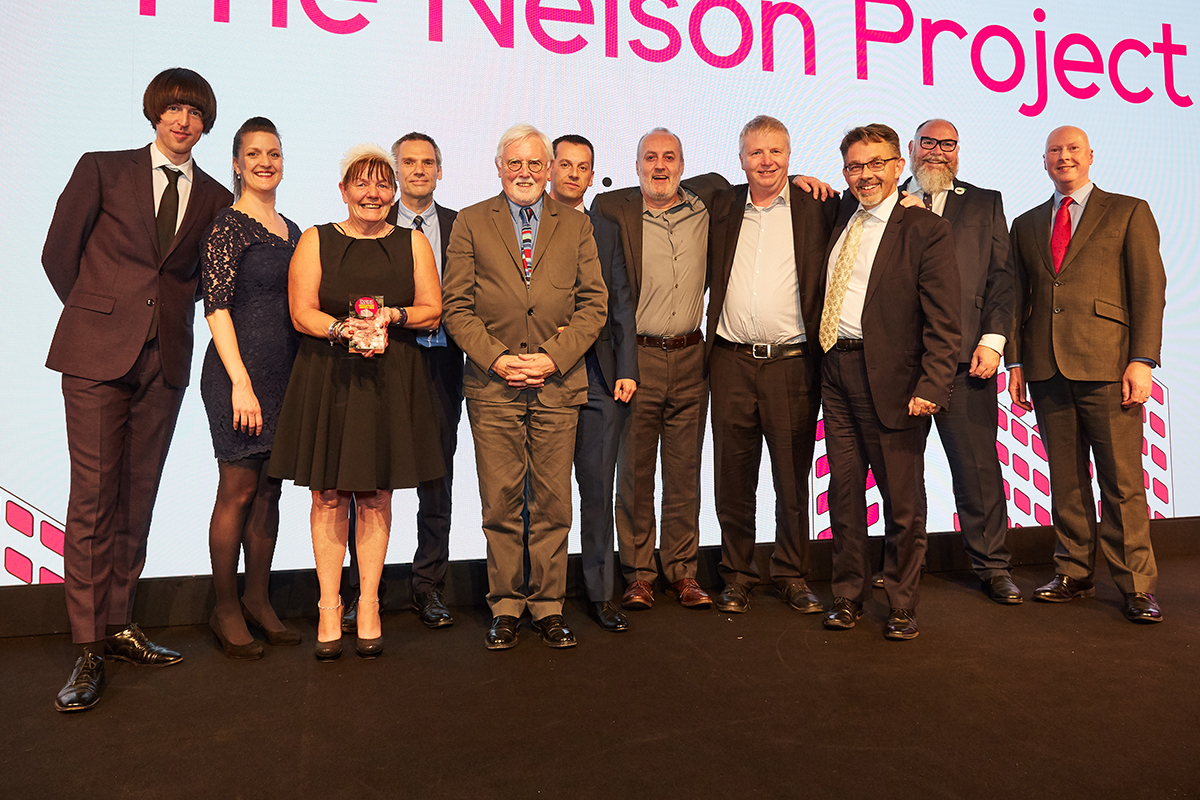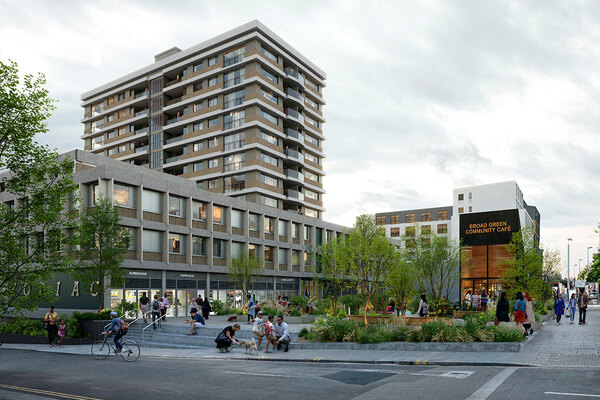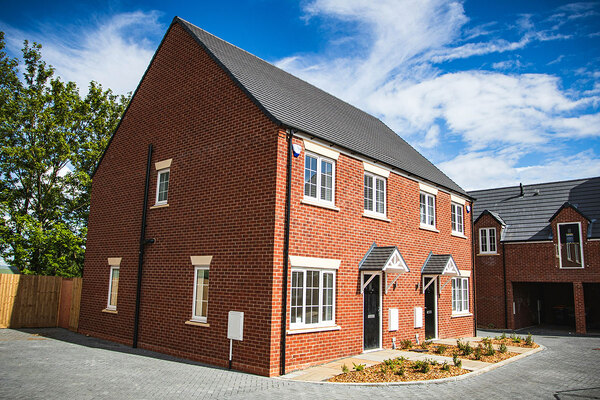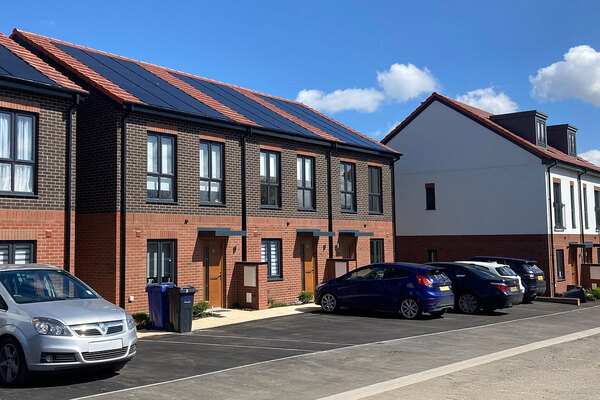You are viewing 1 of your 1 free articles
Inside Housing Development Awards 2018 - why they won
We reveal more about why the Inside Housing Development Award winners were successful Photography by Smile Photography
Each category was judged by our expert panel, which assessed and scored the online submissions to create the shortlists.
The judges – all prestigious leaders in their respective fields, with excellent networks – then met at a judging day to discuss and debate the shortlists before deciding on the eventual winners.
Below, we profile the successful teams and individuals and explain why they won.
Headline sponsor:

Introduction
We might be living in turbulent political times – but across the UK there is one thing that all the major political parties agree on: the need to build large amounts of new housing.
In September we saw prime minister Theresa May court housing associations at the National Housing Summit. And we have also seen the government encourage councils to build by scrapping Housing Revenue Account borrowing caps.
There is much expertise already out there, and many organisations are taking great steps to tackle the housing crisis. The second annual Inside Housing Development Awards, supported by H+H, flag up some of that outstanding practice, with the aim of recognising existing success and highlighting learning that can influence behaviour moving forward.
We received entries from across the UK, from landlords, developers and architects. Congratulations to all of our winners – there are few more important jobs and you are operating at the top of your game. Thanks to all of our judges for their time, and to H+H and our sponsors for enabling the event to take place. Now, sit back and enjoy the very best that UK housing has to offer.
Martin Hilditch, managing editor, Inside Housing
Best older people’s housing development (under 70 homes)
PHOENIX COMMUNITY HOUSING
Hazelhurst Court
- A striking, attractive design has been achieved within a challenging urban context
- Successful emphasis on building a community through the design of shared spaces
- One year after its completion, the scheme’s residents say they feel comfortable, secure
and “at home”
Hazelhurst Court – a 60-home, extra care scheme offering high-quality housing for older people in south Lewisham – represents the first foray into development by Phoenix Community Housing.
This £12.7m project has set the standard for future development by this provider, both in terms of design quality and the engagement of local people at every stage of the development process – and that, says Phoenix, is essential for London’s only resident-led housing association. As well as offering secure and comfortable accommodation, the scheme also incorporates communal areas that include a kitchen and dining area, a garden room, a lounge and a shared courtyard. Most of the new residents in Hazelhurst Court moved from larger under-occupied homes, triggering a series of chain lettings and offering up more suitable properties for local families that need them. More importantly, according to Phoenix, the feedback from the first residents has been very positive. They say they feel safe and secure at Hazelhurst, and that they feel at home.
In the words of one resident: “I used to get depressed sitting in my house. I was a nervous wreck, I didn’t feel safe. Here, the security is fantastic, and it’s social. I like popping down and seeing people. My mind is at rest and I haven’t slept this well for years.”
The judges said
“The judges praised the striking and attractive design of Hazelhurst Court within a challenging urban context. The development also scored highly for its integration of communal facilities within the wider community.”
Highly commended
Quayside, Totnes, Guinness Partnership; 22-25 Thackrah Close, Hampson Williams Architecture
This category was judged by
Jeremy Porteus, managing director, Housing LIN
John Acres, president, Royal Town Planning Institute
Louise Wyman, head of strategy, Homes England
Best older people’s housing development (over 71 homes)
WILLMOTT DIXON AND TRAFFORD HOUSING TRUST
Limelight
- Limelight is more than an extra care scheme – it is a true community hub
- As well as 81 extra care apartments, the scheme includes facilities and spaces for use by the wider community
- The bold, creative scheme achieves high standards both environmentally and in its design
Limelight is more than an extra care scheme – it is a true community hub. This scheme was conceived following research commissioned by Trafford Housing Trust which revealed that the average mortality rates in the 60-65 age group in the Old Trafford area were considerably higher than those of people living in other more affluent parts of the borough.
To improve the health outcomes of local people, Trafford Housing Trust and Willmott Dixon delivered 81 extra care apartments for those aged 55 and over within a multi-use community hub that includes facilities such as communal gardens, a GP surgery, a pharmacy, an opticians, a nursery, a hair and beauty salon, a new church and a rectory. It also features event spaces that can be hired by members of the local community for everything from weddings to corporate meetings.
The scheme provides high-quality care for low, medium and high needs, including health visits to residents up to four times a day. In addition, the building makes use of the latest technology for monitoring the health of residents. Limelight showcases how a well-designed community hub can drive the regeneration of the wider area in which it is located.
The judges said
"Limelight ticked all the boxes for the judges. It is a creative and iconic reimagining of terraced houses that provides a variety of tenures and satisfies high environmental and design standards.”
Highly commended
Longbridge Retirement Village, ExtraCare Charitable Trust; Farrow Court, Ashford Borough Council
This category was judged by
Jeremy Porteus, managing director, Housing LIN
John Acres, president, Royal Town Planning Institute
Louise Wyman, head of strategy, Homes England
Best shared ownership development
Amy Nettleton, assistant development director – sales and marketing at Aster Group, and chair of NSG, presents the ‘Best shared ownership development’ category. Peabody couldn’t be at the event to collect their award
PEABODY
Unity Works
- This scheme sold out completely off-plan, demonstrating both its quality and the level of local demand
- Despite the high quality, prices in this development are lower than the local average for similar properties
- Sustainability is built into the infrastructure of this scheme, which meets Level 4 of the Code for Sustainable Homes
Peabody’s Unity Works is a 100% shared ownership development in Waltham Forest that provides 30 new high-quality one, two and three-bedroom homes. The scheme offers high-specification accommodation in a well-connected location and at an affordable price.
Showcasing the very best in affordability, design and sustainability, all apartments benefit from generous private outdoor space. It offers exceptional value for first-time buyers, with prices starting at £105,000 for a 35% share of a one-bedroom apartment; average prices in the scheme are more than 10% lower than the average for this east London borough, and £100,000 cheaper than the London average.
Unity Works scores highly in terms of sustainability, too. It benefits from an energy centre shared with a neighbouring site, as well as a combined heat and power unit, and solar panels that power the lifts and lights in communal areas, all of which helps to reduce carbon emissions. The development sold out 100% off-plan and more than two months prior to practical completion, demonstrating the high demand for quality, affordable homes in the area.
The judges said
“This is a 100% shared ownership development with 100% pre-sold units, designed to high standards with regards to both internal and external movement and appearance. A sustainable and impressive scheme.”
Highly commended
Gladstone Village, Octavia
This category was judged by
Manisha Patel, partner, PRP
Brian Reynolds, programme director, One Public Estate
Mark Woodrow, director, BTR Partners
Sherin Aminossehe, head of offices, Lendlease Europe
Sponsored by

Design quality
MAE
Brentford Lock West Block E
- A striking, people-focused design that marries the area’s industrial past with its residential future
- The scheme’s design has been developed with and shaped by input from the local community
- A successful and significant step in the regeneration of a large brownfield site
Brentford Lock West, situated on the Grand Union Canal in Hounslow, west London, is a development of 42 high-quality homes. Brick and concrete pavilion buildings complement the neighbouring wharf architecture, while their distinctive sawtooth roofs enhance the skyline and bring light into the upper floors. This project explores ideas of spatial generosity, creating dual-aspect flats with oversized exterior loggias as outside rooms.
Externally, the robust and durable brick urban form, completed with a warm and earthy finish, reflects both the area’s industrial past and residential future. A clear and legible public realm establishes a vibrant, sustainable, people-focused canalside community, with shared surface streets promoting local interaction and encouraging walking and cycling.
The development has set a new standard for residential design in the area, with all its private amenity spaces in excess of the minimum areas set out in the Mayor of London’s Housing Design Guide. Efficient construction with generous layouts has allowed for keen pricing with low service charges; the homes have sold quickly, mainly to owner-occupiers wishing to join a new and flourishing community.
The judges said
“An outstanding design that maximises the development’s canalside position, including public access to the water, while drawing sympathetically on traditional, industrial-style design features.”
This category was judged by
Clare Devine, executive director for architecture, built environment and design, Design Council
Natalie Elphicke OBE, chief executive, Housing and Finance Institute
Richard Petty, lead director – residential advisory, JLL
Amanda Williams, development director, Aster Group
Best build-for-rent development
PLACEFIRST
Welsh Streets
- This scheme has transformed an area of failed housing into striking, modern rental properties
- Placefirst has focused on building affordable rented housing for local families – the private rented sector’s largest group
- The project’s modern design is complemented by a strong focus to help enrich the local community
The Welsh Streets development is transforming 400 empty terraced homes in Toxteth, Liverpool, into a best-in-class rental community aimed at low-to-middle-income households looking for a better rental experience for their families. Large family homes are being created through lateral conversions of adjacent properties and, externally, traditional rear yards are being replaced by private gardens and terraces opening on to new community gardens. Long-term build-to-rent investment has been key to unlocking this hugely challenging regeneration project.
Once an area of housing failure – the homes had been empty for up to 15 years, and were scheduled for demolition – the Welsh Streets offer 21st century Victorian homes set within a high-quality public realm with the community at its heart.
The local Toxteth rental market has suffered from a clear absence of quality for in-work households reliant on the private rented sector. Despite those challenges, the Welsh Streets has been the subject of overwhelming market interest.
Placefirst received more than 800 applications for the 24 homes available in phase one of the development. More than 40% of residents previously lived within one mile of the Welsh Streets, demonstrating the local appetite for a better local rental offer. What was once a failed housing area is rapidly establishing itself as a new benchmark in private renting for Liverpool.
The judges said
“The judges praised the use of older terraced housing, which brought modern-day living into a traditional urban context. The scheme also scored highly for its variety of sizes and strong community feel.”
Highly commended
Gorleston Street, Farrells
This category was judged by
Jeremy Porteus, managing director, Housing LIN
John Acres, president, Royal Town Planning Institute
Louise Wyman, head of strategy, Homes England
Sponsored by

Best approach to modular construction
BEATTIE PASSIVE
Graven Hill Village
- Beattie’s ‘flying factory’ system enabled the efficient and speedy delivery of new Passivhaus homes
- At Graven Hill this innovative approach has kept build costs down
- The regional economy has also benefited through the use of local labour and supply chains
Beattie Passive’s ‘flying factory’ is a temporary, site-based manufacturing facility which enables fast, efficient and cost-effective delivery of modular construction. The factory set-up has been developed to quickly and simply deliver high-quality Passivhaus homes, with the aim of helping councils and housing associations to build more homes while providing high-quality, sustainable, low-cost and comfortable housing for residents.
Beattie Passive is using flying factories (located on-site and remotely) to build homes for the Graven Hill development in Oxfordshire, as well as partnering with housing providers and developers across the UK to enable them to set up their own factories.
At Graven Hill, where Beattie Passive is building 47 homes to Passivhaus specifications, this innovative manufacturing system has demonstrated its ability to deliver fast, efficient and cost-effective modular construction; a build team of four to six people can manufacture a 120m2 home in between five and 15 days, depending on the construction method.
The system has also benefited the local community by employing local labour and supply chains, rather than being dependent on a remote workforce and suppliers.
The judges said
“This scheme scored highly for its innovative approach and ability to deliver high-quality homes quickly and simply. The use of an on-site ‘flying factory’ kept costs low and the judges praised its energy efficiency.”
Highly commended
Marlborough Park, Zero C (part of Places for People)
This category was judged by
Jeremy Porteus, managing director, Housing LIN
John Acres, president, Royal Town Planning Institute
Louise Wyman, head of strategy, Homes England
Sponsored by

Best partnership (under 100 units)
HOUSING & CARE 21
Casson Court
- A unique development that could not have succeeded without strong collaboration between partners
- It preserves a significant slice of local history both for the community and for the scheme’s older residents
- Casson Court is a successful marriage of modern extra care housing and local heritage
When three dedicated parties – Housing & Care 21, Doncaster Metropolitan Borough Council and Historic England – collaborated to offer housing for older people, they wanted to make a difference. That difference meant tirelessly working to secure a site holding Doncaster’s historic Peel Hill Motte (a Norman castle mound) in its gardens. Not only did the partnership develop a forward-thinking scheme, its members also recognised the rare opportunity for people of modest means to receive added value by living alongside an 11th century scheduled monument.
The synergy between new and old makes this partnership’s achievement stand out. It wasn’t just about creating something modern, but also about allowing local older people, particularly those with dementia, to connect to their pasts through a monument they are likely to have grown up with all of their lives. The partnership also ensured that the motte would benefit from being held on site at Casson Court and that future generations could experience it thanks to its continued preservation.
The partners learned not to underestimate the work involved with a project involving a new development and a piece of history. Although challenging, the successful development
of Casson Court was made possible with hard work and determination and with the involvement of a trio of partners which shared the same work ethic.
The judges said
“This scheme had to overcome complicated land ownership issues… [but] strong collaboration between the partners resulted in a blend of contemporary retirement living with the retention of a heritage landmark.”
This category was judged by
Rebecca Larkin, senior economist, Construction Products Association
Andy von Bradsky, design and delivery advisor, Ministry of Housing, Communities and Local Government
Sheron Carter, chief executive, Habinteg
Best partnership (over 101 units)
BROADWAY LIVING
Copley Hanwell W7
- Ealing Council's new housing company has hit the ground running with this 280-home scheme
- A uniquely challenging development has required strong partnership working between the council and its partners
- To date, 105 homes have been refurbished and five new properties built – all much needed in this west London borough
Ealing Council has taken an innovative approach to solving its housing crisis by setting up a council-owned company, Broadway Living, to develop new homes and reinvest the profits into funding much-needed affordable housing. Broadway Living is an imaginative partnership that brings together council employees with consultants who have extensive expertise in property development. It gives the council the skills it needs to build and market private sale properties successfully.
Broadway Living’s first major project is Copley Hanwell W7, the regeneration of a 1970s estate, where it has delivered and sold the first phase of 33 private homes; the project will eventually deliver 280 new homes, of which 50% will be affordable, along with the refurbishment of 554 social rent homes.
The project has proved exceptionally challenging. The site is very narrow, for example, and located parallel to a railway line, with the track running underneath one end of the estate.
This required teamwork between the partners, together with constant contact with Network Rail, to resolve complicated construction issues.
The response from residents has been overwhelmingly positive. Charlotte Lewis, who moved into a new build affordable house with her family, said: “It is amazing quality – much better than you usually find in council homes. It is a better size for our family too, and we are ever so grateful.”
The judges said
"The judges praised the strong leadership demonstrated by this exemplary council-led partnership that has delivered its ambitions – in an extremely challenging scheme – very well.”
This category was judged by
Rebecca Larkin, senior economist, Construction Products Association
Andy von Bradsky, design and delivery advisor, Ministry of Housing, Communities and Local Government
Sheron Carter, chief executive, Habinteg
Market sale development of the year
A2 DOMINION AND MOUNT ANVIL
Queen’s Wharf
- A careful and considered redevelopment of a derelict riverside site in west London
- The design and layout reflects Riverside Studios’ history as a film and television centre
- The scheme opens up the Thames riverside to the public and provides a host of new amenities for the community
Queen’s Wharf is an outstanding development providing 165 homes, redeveloping the iconic Riverside Studios in the London Borough of Hammersmith and Fulham and creating a new riverside walkway connecting the Thames Path and Grade II listed Hammersmith Bridge for the first time.
A2 Dominion and its joint venture partner Mount Anvil have transformed two derelict sites into a dynamic mixed-used development through innovative design and construction techniques. At just eight storeys high, the architecture of the building has been carefully considered both to complement the neighbouring buildings and to celebrate Queen’s Wharf’s Thames-side setting.
Every panel of glass and layer of brickwork elegantly follows the curve of the river, while a series of multi-levelled landscaped gardens have been created in the centre for residents to enjoy. The development’s metal and brick facades reflect the nearby Hammersmith Bridge and neighbouring post-war Queen Caroline Estate.
Riverside Studios has a rich theatrical history – Doctor Who and Top of the Pops were both filmed there, as were many films – and this heritage is on show with a cinema, recording studios, theatre, restaurant and cafe included in the scheme at ground level, as well as a permanent exhibition explaining the site’s history in the foyer.
The judges said
"This is a landmark building which makes optimal use of its riverside setting, combining desirable homes with fantastic public amenities, regenerating an important site and opening up the river to the public.”
This category was judged by
Clare Devine, executive director for architecture, built environment and design, Design Council
Natalie Elphicke OBE, chief executive, Housing and Finance Institute
Richard Petty, lead director – residential advisory, JLL
Amanda Williams, development director, Aster Group
Sponsored by

Best development team (under 20 members)
BRICK BY BRICK
- In the two years since its launch this small company has achieved an impressive amount
- It has already gained planning consent on sites that will deliver more than 3,000 new homes in south London
- A small and diverse team specialises in the smaller, more complicated sites ignored by other developers
In the two years since Brick by Brick launched, it has already gained planning consents on over 40 sites that will deliver more than 3,000 new homes. This year, the company has successfully procured the first 30 projects through its newly established contractor framework. These schemes are underway, and the first completions are due in January 2019.
But this firm is not all about the numbers. It works predominately on tough small-scale sites in London, typically those capable of delivering 15 to 20 homes in traditionally suburban areas, providing 50% affordable homes by working with the best architects and designers to create unique and inspiring homes that ordinary people can afford and be proud to call home.
The company is made up of a small and nimble team that encompasses a range of development expertise, and this has allowed it to achieve a great deal in a short amount of time. Although a private company, Brick by Brick’s public sector-led approach to agile and flexible working has, it believes, been key in attracting a diverse workforce that is comprised of more than 75% female staff and over 30% from BAME backgrounds – more than double the construction industry average. In-house expertise in design, communications, finance, regeneration and planning means the company can act quickly and focus on its mission: the delivery of quality new homes.
The judges said
"Brick by Brick is a serious organisation making a serious difference with good scale, a steady pipeline and a strong talent base.”
Highly commended
Housing development team, Dacorum Borough Council
This category was judged by
Manisha Patel, partner, PRP
Brian Reynolds, programme director, One Public Estate
Mark Woodrow, director, BTR Partners
Sherin Aminossehe, head of offices, Lendlease Europe
Best development team (over 21 members)
DEVELOPMENT TEAM, WHEATLEY GROUP
- The team has overseen dramatic growth in its development programme during the past few years
- Staff are setting and meeting clear goals in terms of build quality and resident satisfaction
- Impressive working relationships with local and national government across Scotland
Glasgow-based Wheatley Group has been the UK’s largest builder of social housing for the past two years, increasing its output from 200 unit approvals in 2014/15 to 1,500 last year.
The development team has been expanded, new management systems introduced and innovative housing production supported, as the company continues to use its scale to make attractive places and build sustainable housing.
Wheatley’s development programme is ambitious in its drive to build a high standard of housing, an approach which has seen tenant satisfaction with its homes consistently above 95%. Demand across the group’s areas of operation continues to outstrip supply, and the organisation uses its size and scale to improve efficiency and widen housing choice.
Wheatley also works with its own charity, the Wheatley Foundation, to maximise the benefits to local communities with each construction project; on current projects, these benefits will include 231 employment opportunities and more than £135,000 of community investment.
The development team builds successful relationships with councils that make it central to regeneration and housing strategies across Scotland, working collaboratively with the group’s housing management teams to respond to local needs. This learning and experience is then shared across the development team, whose projects have been shortlisted on nine occasions by several of the industry’s awards bodies.
The judges said
"The team possesses clear goals and solid foundations, showing impressive links with national and local government and exceeding affordability benchmarks. The judges also praised the clear submission.”
Highly commended
Development team, Trafford Housing Trust
This category was judged by
Manisha Patel, partner, PRP
Brian Reynolds, programme director, One Public Estate
Mark Woodrow, director, BTR Partners
Sherin Aminossehe, head of offices, Lendlease Europe
Best regeneration project (under 70 homes)
PENNAF HOUSING GROUP
Gronant Street and Abbey Street Rhyl Regeneration Scheme
- This small-scale development has punched above its weight in terms of wider community benefits
- The scheme has helped lift the local area from deprivation into somewhere that people want to live
- Wide consultation prior to starting work informed the design and brought the community on board
Pennaf Housing Group member Clwyd Alyn Housing Association’s combined Gronant Street and Abbey Street development of 20 mixed-tenure, new build homes in Rhyl is the signature housing element of a transformational urban regeneration project on the North Wales coast.
The Welsh Government, Denbighshire County Council and local housing associations have worked in partnership to deliver an ambitious housing scheme centred around a new parkland area called Gerddi Heulwen (Welsh for Sunshine Gardens). This is part of a comprehensive investment programme across the town, which is sparking a renaissance in the local economy and offering significant improvements for local residents’ job opportunities and quality of life.
Clwyd Alyn consulted widely with resident groups, partner agencies and service providers to create this landmark development of new homes overlooking the new green space, offering both affordable rental and a 50% home-buy option to local people, targeting working families in particular.
The scheme has made a significant change locally, transforming it from an area characterised by a benefit-dependent culture into a vibrant new location of choice for working families, and making a real difference to local pride, self-belief and resident empowerment.
The judges said
"This scheme addressed two local problems: housing configuration and high social deprivation. It has transformed the location into a desirable place to live and is a great example of smaller-scale regeneration.”
Highly commended
Andover Estate Phase One, Islington, Studio Partington
This category was judged by
Rebecca Larkin, senior economist, Construction Products Association
Andy von Bradsky, design and delivery advisor, Ministry of Housing, Communities and Local Government
Sheron Carter, chief executive, Habinteg
Best regeneration project (over 71 homes)
GALLIFORD TRY PARTNERSHIPS
Trilogy I Gateshead
- Well-designed homes that help address the need for quality, affordable housing
- The development has boosted the local economy as well as creating new jobs and apprenticeships
- Strong partnership working between the developer and the local council has been key to
its success
Housing in Gateshead evolved historically to meet the needs of workers in traditional industries and is comprised mainly of densely packed flats and terraced houses. The emergence of new economies and a move away from manufacturing has changed the socio-economic profile of inner Gateshead, however, leaving a significant gap between housing supply and demand.
Trilogy I in Gateshead is an ambitious £12m regeneration initiative designed to revive communities and kick-start economic activity, while delivering a step change in the quality and choice of mixed-tenure homes in the area. A quarter of the jobs and apprenticeships are filled by local people and 25% of contract spending on the development is made within the borough. Trilogy I has provided 20 homes for shared ownership, 18 for affordable rent and 61 for private sale, as well as creating 11 jobs for unemployed people and three apprenticeships. The project has hugely improved local streetscapes, replacing pre-war semi-derelict houses with striking new homes and communal gardens.
To date, 57 of the 61 homes for sale have been sold, 70% of them to people moving within the borough. This has also helped to meet another fundamental local goal of halting migration from Gateshead.
The judges said
"Good-quality design and attention to detail, addressing social and economic needs of local people for new affordable homes and jobs. An excellent example of comprehensive regeneration in a regional context.”
This category was judged by
Rebecca Larkin, senior economist, Construction Products Association
Andy von Bradsky, design and delivery advisor, Ministry of Housing, Communities and Local Government
Sheron Carter, chief executive, Habinteg
Best inclusive development
HAMPSON WILLIAMS ARCHITECTURE
22-25 Thackrah Close
- High-quality, modern and adaptable supported housing in the grounds of existing almshouses
- Homes are built around a landscaped garden that encourages residents to socialise outdoors
- The design respects the original building while incorporating up-to-date assisted-living technology
In 2012, sheltered housing provider The Finchley Charities commissioned Hampson Williams Architecture to design a 16-unit assisted-living development for over 55s within the grounds of one of the charity’s existing almshouses.
The charity’s vision and brief was to achieve a high-quality, adaptable and sustainable design that would provide affordable and accessible lifelong homes for its residents to meet current and future care and support needs. The design had to be robust, low maintenance and highly energy efficient, with good security, a feeling of spaciousness and full of light – in short, a joyful place to live.
A further challenge was to create homes with access to a new garden area, encouraging residents to spend time talking and meeting outside their personal homes. The resulting L-shaped design succeeds on all fronts. Great thought and care was taken by the design team to ensure the external grounds and gardens provided access, allowing all residents to use and enjoy them. The result is a beautifully crafted building and gardens providing a delightful place to live in an existing community. The almshouses have been reinterpreted for the 21st century.
The judges said
"An impressive articulation of design that echoes traditional almshouses with good detailing and effective implementation of inclusive design features. A place we would be happy to live in.”
Highly commended
Chobham Manor, Multigenerational House, PRP Architects
This category was judged by
Rebecca Larkin, senior economist, Construction Products Association
Andy von Bradsky, design and delivery advisor, Ministry of Housing, Communities and Local Government
Sheron Carter, chief executive, Habinteg
Best affordable housing development (under 25 homes)
LiveWest
The Nelson Project
- A flagship housing scheme for Plymouth, self built by 12 Armed Forces veterans who are now residents
- As well as gaining a home, the self-builders completed training in construction skills
- In addition to the veterans’ housing, some units have been built specially for people with learning disabilities
The Nelson Project – a development of 24 single-bedroom apartments in Plymouth – came about thanks to a partnership between Community Self Build Agency, Liverty, Plymouth City Council and Form Design Group, with a shared vision to deliver flagship quality housing and transform the lives of returning service veterans by helping them to build their own homes.
A key objective for the veterans was to make them more employable at the end of the project; to this end the self-builders completed training and certificates in carpentry, plastering, bricklaying and management of site safety.
The Nelson Project houses 12 veterans, six people from the housing waiting list, and includes six homes for people with mild learning disabilities. The brief was guided by the criteria for Lifetime Homes and Housing for an Ageing Population, with a focus on flexibility which ensures that the homes can adapt to the changing needs of residents over time.
John, 54, who found himself homeless in Plymouth after having served as an infantry soldier for six years, said: “The project worked immensely well. It’s not easy work, and you’ve got to stick with it, but we built somewhere to live and get our lives back together. Living in my new home will be peaceful, safe and secure.”
The judges said
"A true flagship housing project that shows what can be achieved through partnership, this scheme included impressive self build and construction skills training, with potentially life-changing results.”
Highly commended
Sharnbrook, Hastoe Housing Association
This category was judged by
Clare Devine, executive director for architecture, built environment and design, Design Council
Natalie Elphicke OBE, chief executive, Housing and Finance Institute
Richard Petty, lead director – residential advisory, JLL
Amanda Williams, development director, Aster Group
Best affordable housing development (26-70 homes)
STOLL
Centenary Lodge
- Much-needed homes for veterans in an area with a significant shortfall of this type of accommodation
- As well as single-bedroom properties, the scheme includes homes for families and disabled veterans
- A development built around shared communal spaces, meeting Level 4 of the Code for Sustainable Homes
Named to commemorate the centenary of World War I, Centenary Lodge in Aldershot offers specialist supported housing to 34 of the UK’s most vulnerable and disabled ex-service personnel of all ages. The scheme includes 27 one-bedroom flats, as well as five family homes and two fully accessible flats for disabled veterans.
More than 50% of the scheme’s residents need support with their mental health, so every aspect of the scheme is designed to provide a therapeutic experience. It is situated on the edge of a nature reserve and surrounded by trees and extensive landscaping so tenants interact with the natural environment wherever they are in the building. The scheme also offers communal areas, allotments, IT facilities, support and activities.
All residents pay a social rent, which is set to encourage employment so no one is out of pocket if they return to work at the minimum wage.
Centenary Lodge resident Craig Wheatley served in the army for 11 years. “I’m ready for the next step and to move into my own flat… Without these services, I couldn’t give you an answer of where I’d be today,” he says. “I’m ready to grab this opportunity with both hands and I’m ready for the future.”
The judges said
"A partnership between agencies and charities has produced a modern design that makes best use of its surroundings. All homes are for social rent, which supports residents in moving into civilian employment.”
Highly commended
Chapelpark, Angus Council
This category was judged by
Clare Devine, executive director for architecture, built environment and design, Design Council
Natalie Elphicke OBE, chief executive, Housing and Finance Institute
Richard Petty, lead director – residential advisory, JLL
Amanda Williams, development director, Aster Group
Best affordable housing development (over 71 homes)
WILLMOTT DIXON AND TRAFFORD HOUSING TRUST
Limelight
- This development is a deserving winner of two of this year’s awards
- A boldly designed extra care scheme that aims to improve the health and well-being of its residents
- Includes an impressive suite of services that will bring the local community and the scheme together
Limelight is the only development to win two of this year’s housing awards (and has been highly commended for another) – a resolute endorsement of the quality of this scheme. It is a development of 81 spacious extra care apartments in Old Trafford, built to help address local housing need and to improve local health and well-being; a study commissioned by Trafford Housing Trust found that life expectancies in the area were seven to eight years lower than elsewhere in the borough. To that end the scheme includes several specialist services including a restaurant, GP surgery, MRI scanner, pharmacy, optician, nursery, hairdresser and library, as well as a new church and rectory.
The scheme provides high-quality care for low, medium and high needs, including health visits to residents up to four times a day. And to top it off, the scheme was delivered early and under budget.
In the words of one resident: “I love my new flat at Limelight which is much better than where I lived before. I can navigate around it fine and I know where everything is. The way I live has totally changed for the better.”
The judges said
"A truly outstanding scheme of bold, statement architecture that brings the community into the life of an extra care scheme, with demonstrable healthcare benefits enabling people to lead longer and healthier lives.”
Highly commended
Kings Crescent Phases 1 and 2, Hackney Council; Leith Fort, City of Edinburgh Council
This category was judged by
Clare Devine, executive director for architecture, built environment and design,vDesign Council
Natalie Elphicke OBE, chief executive, Housing and Finance Institute
Richard Petty, lead director – residential advisory, JLL
Amanda Williams, development director, Aster Group
Best residential development (under 70 homes)
TRAIL ARCHITECTS
The Raining’s Stairs Development
- A small scheme that has reinvigorated a historical part of Inverness city centre blighted by anti-social behaviour
- Strong partnership working between the local authority, architects and housing provider were key to its success
- This design has succeeded on a challenging site that other developers have left alone
The Raining’s Stairs development reinvigorates an important part of Inverness, replacing a long-vacant problem site with a building of significant architectural quality and delivering profound, transformational benefits to the community.
The site has a long and interesting history, and was part of medieval Inverness. The stairs themselves are a core path through the city, linking Inverness Castle with the surrounding neighbourhood. The once-vibrant area centred around the stairs used to host a healthy mix of shops and housing, but had fallen into decline since the 1970s. Gradually the site became a blight on the city, becoming notorious for anti-social behaviour. Over many years planning applications were granted but never progressed due to the challenging nature of the site.
The development comprises 16 affordable housing units and a small commercial unit, and the steps themselves have also been rebuilt. This project is an example of how a committed, hard-working group of clients, contractors, and designers can work together to create something which is transformative. The Raining’s Stairs development provides high-quality social housing and is a key element within the overall regeneration and transformation of Inverness city centre.
The judges said
"The judges described this entry as an excellent development of a highly challenging site.”
This category was judged by
Manisha Patel, partner, PRP
Brian Reynolds, programme director, One Public Estate
Mark Woodrow, director, BTR Partners
Sherin Aminossehe, head of offices, Lendlease Europe
Sponsored by

Best residential development (Over 71 homes)
BELL PHILLIPS ARCHITECTS
St Chad’s
- St Chad’s is the first scheme completed by Thurrock Council’s housing company, Gloriana
- The 128-home, tenure-blind development has breathed life into a previously redundant parcel of land
- An architecturally noteworthy scheme built on a modest budget
St Chad’s is a 128-home development located at a former namesake school site in Tilbury, Essex. Heralded as the first scheme to be procured through Gloriana, Thurrock Council’s new development vehicle, St Chad’s is an integral part of the council’s wider strategy for regenerating this area. St Chad’s crucially breathes new life into a redundant and underused plot, while raising the bar in terms of design quality. The project’s carefully considered mixture of affordable and market value housing is intended to improve its social mix.
Incorporating a design that achieves greater densities than the surrounding suburban context, the development has created an inclusive, sustainable community that successfully ties into the existing streetscape. The site’s location offers primary and secondary schools, sporting facilities, public green spaces and town centre amenities at an accessible walking distance.
All the homes were constructed with a tenure-blind approach, and with generous provision for those on the council’s housing waiting list. Thurrock Council is also selling several homes at market rates to support a balanced neighbourhood.
St Chad’s will fulfil the council’s aim of creating more affordable housing, but also raising aspirations and property values in Tilbury.
The judges said
"St Chad’s is an excellent local authority scheme with a good use of density to maximise the number of houses, all while bringing a redundant asset back to life.”
Highly commended
Limelight, Willmott Dixon and Trafford Housing
This category was judged by
Manisha Patel, partner, PRP
Brian Reynolds, programme director, One Public Estate
Mark Woodrow, director, BTR Partners
Sherin Aminossehe, head of offices, Lendlease Europe
Sponsored by

Judges
Inside Housing recruited a panel of expert judges from across the housing sector with a wide range of experience to decide the winners of Inside Housing Development Awards 2018.
John Acres
President, Royal Town Planning Institute
Clare Devine
Executive director for architecture, built environment and design, Design Council
Natalie Elphicke OBE
Chief executive, Housing and Finance Institute
Rebecca Larkin
Senior economist, Construction Products Association
Manisha Patel
Partner, PRP
Brian Reynolds
Programme director, One Public Estate
Andy von Bradsky
Design and delivery advisor, Ministry of Housing, Communities and Local Government
Mark Woodrow
Director, BTR Partners
Richard Petty
Lead director – residential advisory, JLL
Sherin Aminossehe
Head of offices, Lendlease Europe
Jeremy Porteus
Managing director, Housing LIN
Sheron Carter
Chief executive, Habinteg
Amanda Williams
Development director, Aster Group
Louise Wyman
Head of strategy, Homes England


